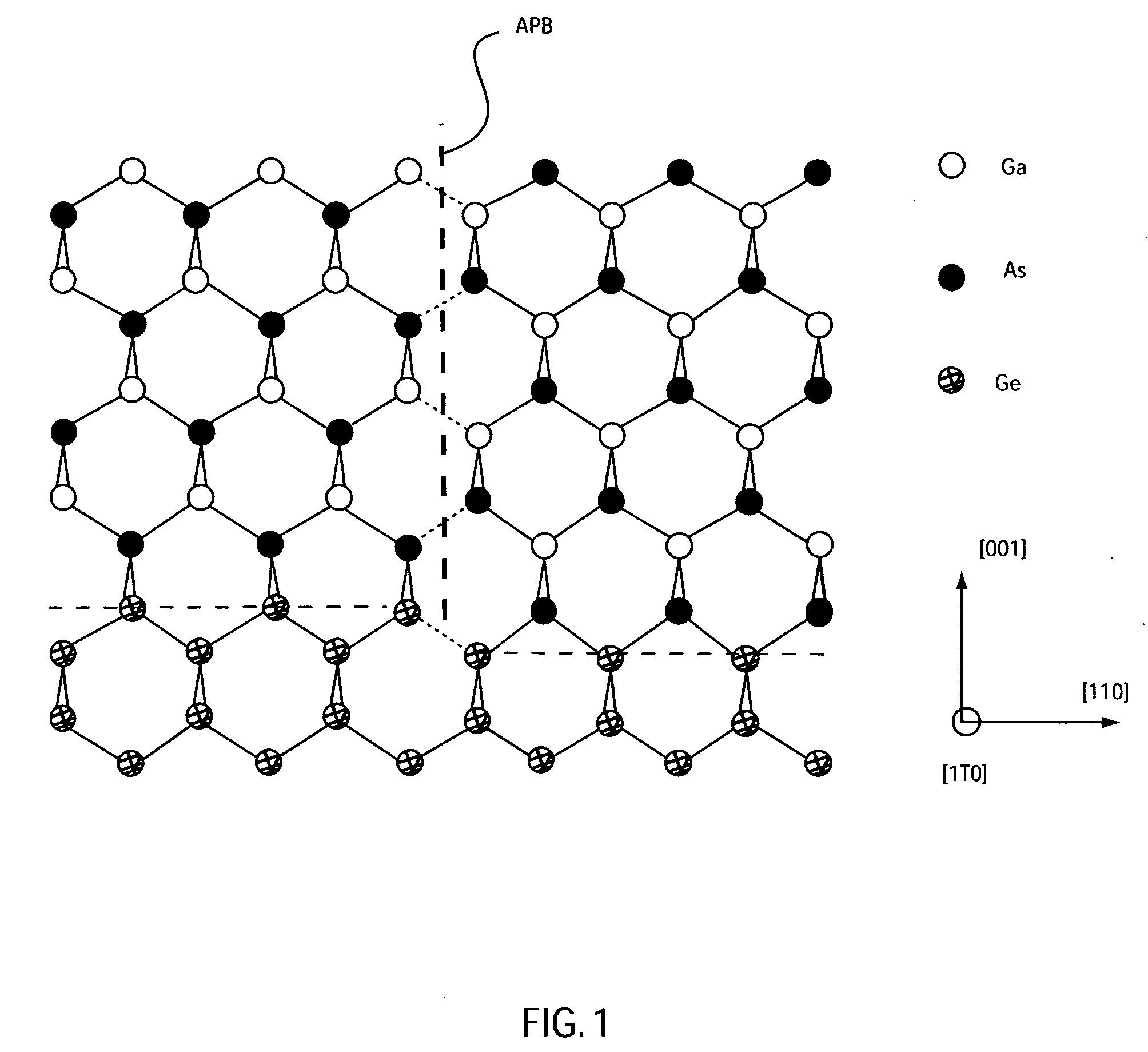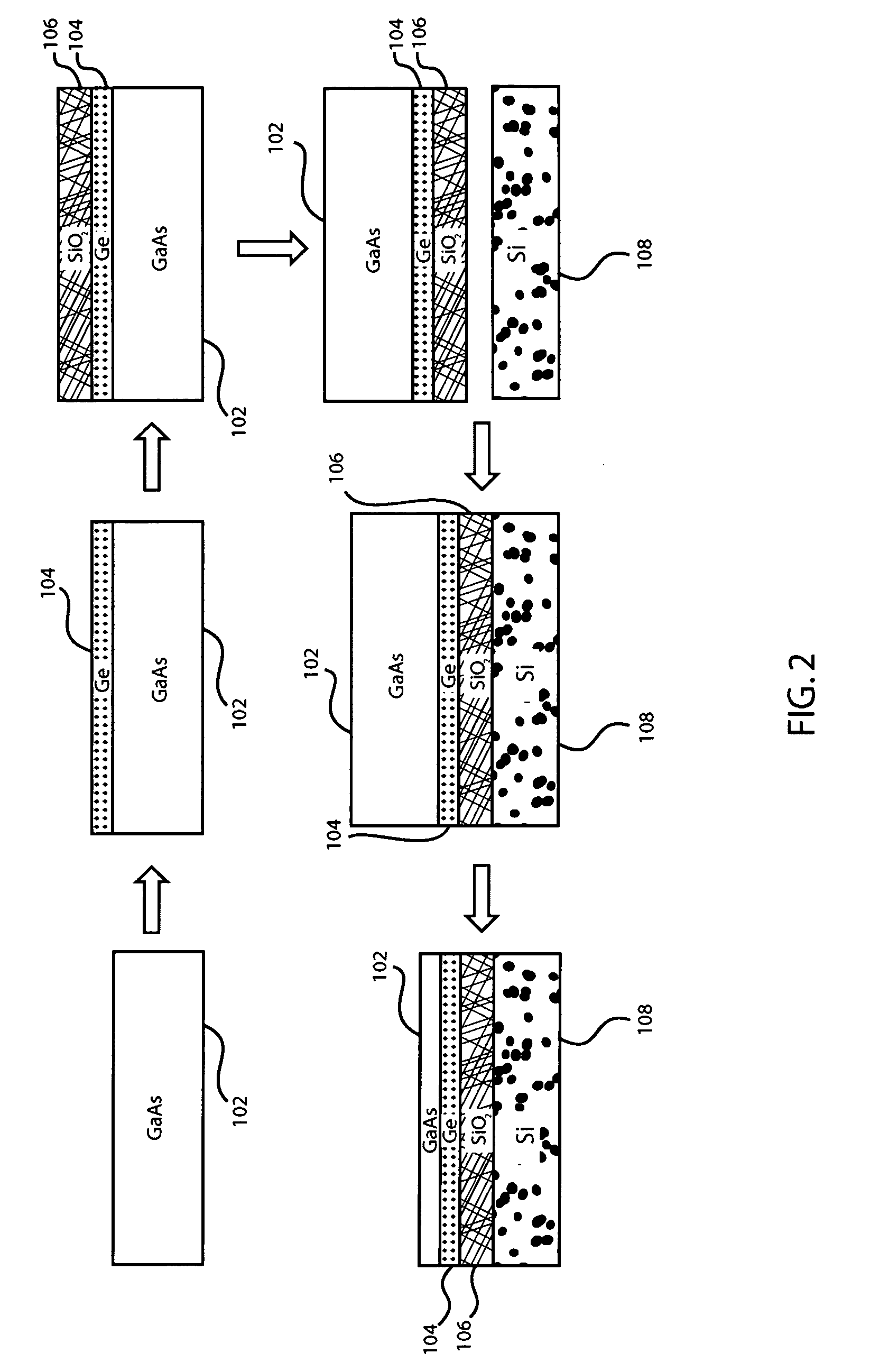Structure and method of integrating compound and elemental semiconductors for high-performace CMOS
a compound and elemental semiconductor technology, applied in the field of semiconductors, can solve problems such as potential problems, poor quality gaas with large defect densities, and low defect density of methods proposed in gao and hoang
- Summary
- Abstract
- Description
- Claims
- Application Information
AI Technical Summary
Benefits of technology
Problems solved by technology
Method used
Image
Examples
Embodiment Construction
[0021] The present disclosure describes exemplary embodiments for methods and devices, which combine compound and elemental semiconductors onto a silicon (Si) substrate in such a way as to avoid the problem of anti-phase domains in the compound semiconducting material.
[0022] The one concept is to epitaxially grow an elemental semiconductor on a single-crystal compound semiconductor substrate and then use wafer bonding to transfer the combined compound and elemental semiconductor layer structure onto a Si substrate. This methodology solves the problem of anti-phase domains, because it avoids altogether compound semiconductor growth on an elemental semiconductor.
[0023] This method also creates high-quality films for both the compound and elemental semiconductors because bulk compound semiconductor crystals have low defect densities relative to layers produced by direct growth or compositional growth on Si.
[0024] The teachings of this disclosure could apply to any compound / elemental...
PUM
 Login to View More
Login to View More Abstract
Description
Claims
Application Information
 Login to View More
Login to View More - R&D
- Intellectual Property
- Life Sciences
- Materials
- Tech Scout
- Unparalleled Data Quality
- Higher Quality Content
- 60% Fewer Hallucinations
Browse by: Latest US Patents, China's latest patents, Technical Efficacy Thesaurus, Application Domain, Technology Topic, Popular Technical Reports.
© 2025 PatSnap. All rights reserved.Legal|Privacy policy|Modern Slavery Act Transparency Statement|Sitemap|About US| Contact US: help@patsnap.com



